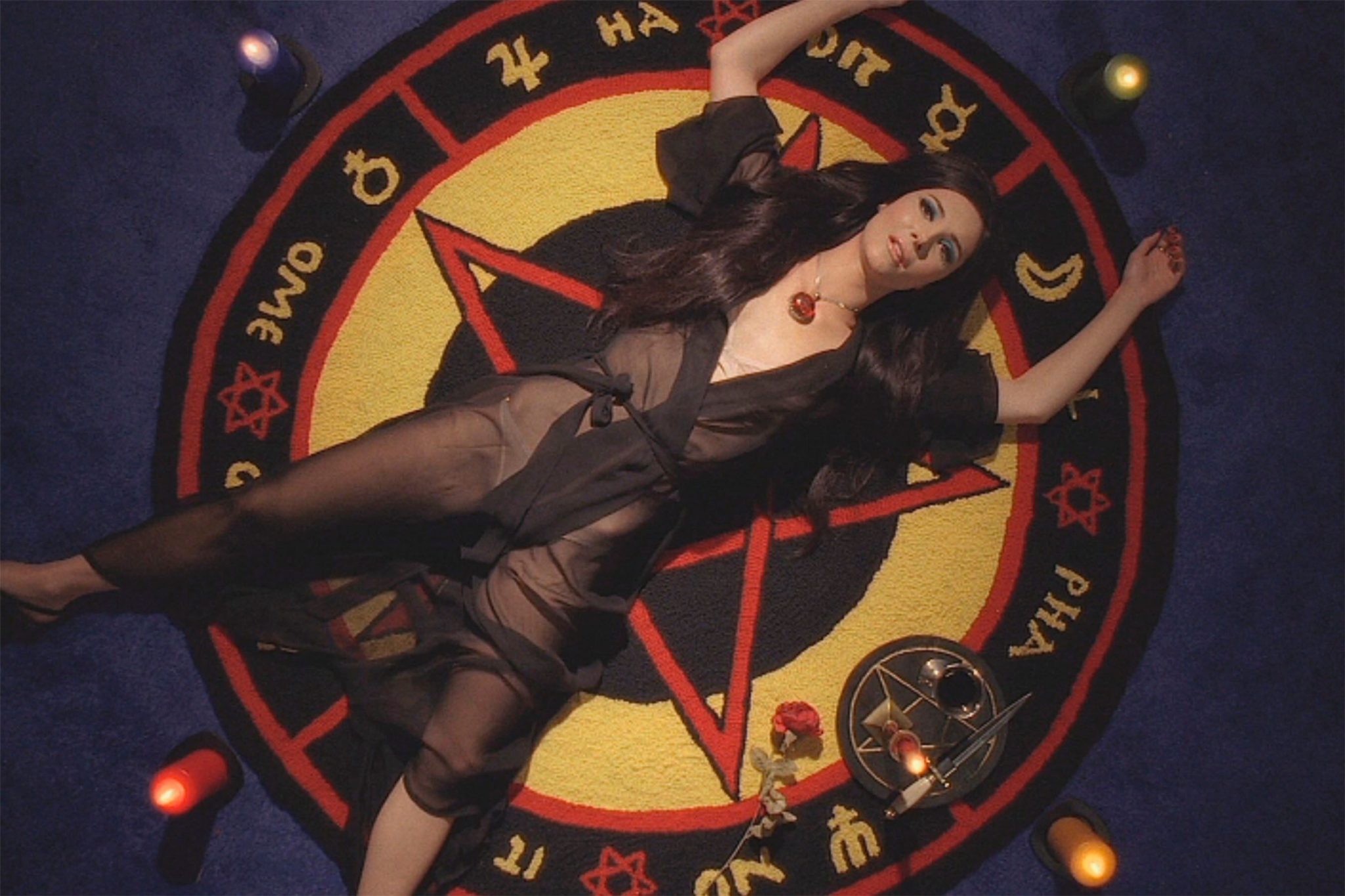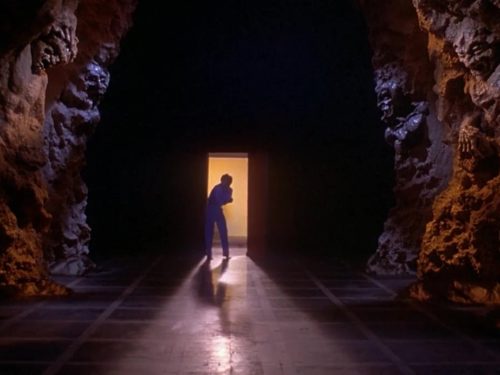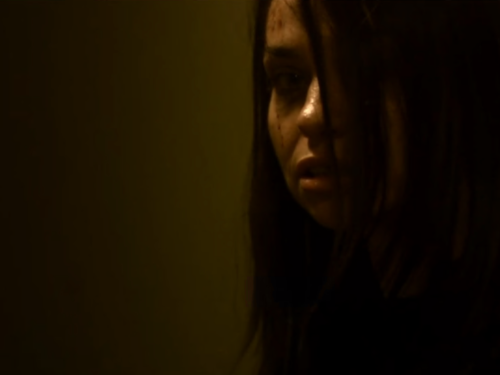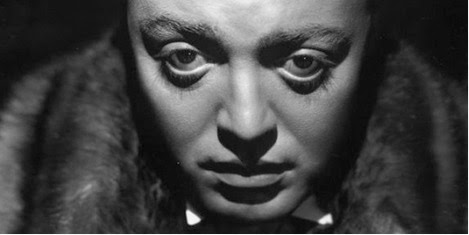Anna Biller’s 2016 film emphasizes the likeness between witchcraft and filmmaking, magic and art
Early in Anna Biller’s 2016 film The Love Witch, Elaine (Samantha Robinson) is at work on a painting of a nude woman standing beside a horse in the woods. In this woman’s hand is a chalice with smoke billowing out of it, and in this outrush appear the heads of several men. Elaine applies a fine brush to touch up the woman’s hair, and in the next brief shot we see her in a medium close-up, wearing an acutely focused look. For a reason that was inscrutable to me the first time I saw the film, this shot of Elaine provoked modest laughter from the audience.
Related: High Tension: Conflicting Fantasies Of A Different Body by Logan Taylor
This reaction struck me as strange because nothing here plays for comedy. It is such a quotidian and minute exchange of shots that it does not even register as narratively significant, let alone funny. Even so, I could not help but think that there was something off here — there had to be — and I came to the stillness of this moment. It’s as if when Biller cuts to Elaine’s face, she pauses the film and changes what we are watching. In this counter-shot, Elaine becomes a painting, one that we are meant to contemplate as much as her artwork. Elaine stands in for Biller, as the artist who pauses to look over her art: This close-up parallels the shot of Elaine filling in the nude woman’s hair — Biller is using her camera to fill in a small detail that stands to be carefully observed. But it is not clear why our attention to this is so, almost unnervingly, important.
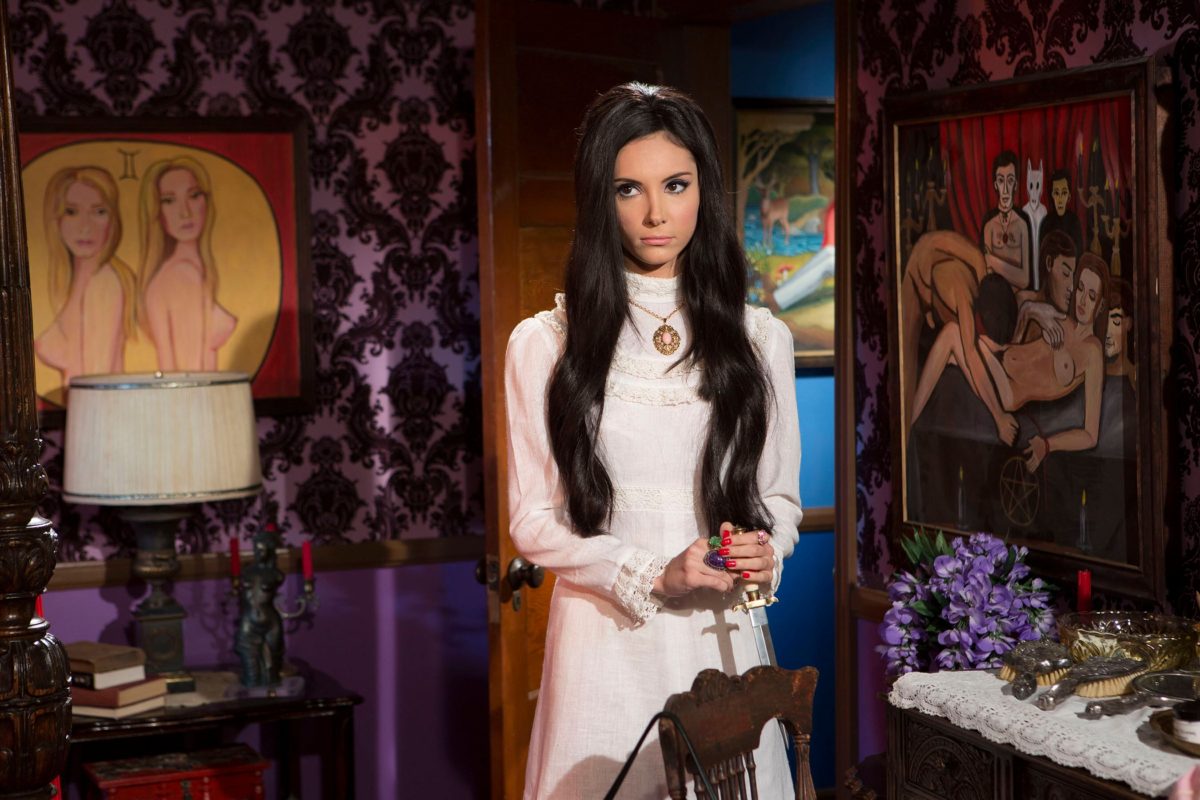
But this is also what makes The Love Witch so fascinating — it is very much a film that is about how its audience sees and reacts to it. Narratively, the film is about Elaine’s quest to find a man to love her. As a beautiful witch, Elaine uses both her femininity and actual love magic to draw men to her, but the result is always the same: They end up dead after Elaine seduces them. We do not see her murder her ex-husband, Jerry (Stephen Wozniak), but it is heavily suggested that Elaine poisoned him, and, in fact, the film begins with her on the run. Soon after settling into an apartment in a small town in northern California, Elaine meets a university professor, Wayne (Jeffrey Vincent Parise) and uses a love potion that eventually kills him, but not before she cooks him dinner and sleeps with him. Wayne’s disappearance results in a police investigation, with the lead detective, Griff (Gian Keys) pursuing Elaine and falling in love with her, to both his and Elaine’s ultimate demise.
Purely from a plot summary standpoint, The Love Witch would seem to fit the profile of almost any serial killer film: We see the killer in action and law enforcement trailing behind. But it is the small and ambiguous details that make the film something different and self-aware, in which Biller emphasizes the likeness between witchcraft and filmmaking, magic and art. To add to the connection between Elaine and Biller, we see Elaine preparing various magical items and performing a ritual that will set in motion a chain of seductions and murders. Elaine meticulously measures and arranges things, and it is not a stretch to imagine Biller setting up her mise-en-scène with the same attention to detail. Indeed, as the film goes on it is hard not to see this self-reflexivity, and due to this, Biller seems to guide us to experience the film in two ways. One is to enjoy the hypnotic narrative as it progresses; the other is to regard every image, sound and moment as imbued with meaning, put in place by some consciousness, for some purpose.
I say “some consciousness” because of Robinson’s phenomenal work. She plays Elaine as almost dissociated from her actions, even as she carries on with an overwhelming sadness, making her hard to access but also impossible to look away from. This is complicated even more when seeing Elaine as a cipher for Biller, and this comes across yet again in the way the director pauses the film, this time from a narrative standpoint through repetitive seductions and murders. We repeatedly see and hear Elaine’s memories of Jerry that make it easier to believe she actually killed him. And each time Elaine does this, she performs the same rituals. Just as she did with Wayne, Elaine cooks for and sleeps with Richard (Robert Seeley), the husband of the woman from whom she is renting the apartment. Richard eventually kills himself, but it is heavily suggested that this was due to his infatuation with Elaine. With Griff, we actually do see Elaine stab him in the heart, which is itself a reference to another of Elaine’s paintings.
Related: What Ever Happened to Spider Baby? by Jason Michelitch
As perversely enjoyable as it may be to watch these murders unfold, Biller opens the film up to us in such a way that we do not have to take them as indications of a serial pathology; we are invited to see them as choices on Biller’s part to slow things down and render them more mysterious, while affording us time for contemplation. Essentially, our thoughts become why does Biller cast all these men who share the same physical characteristics (white, slender, sharp facial features)? rather than why does Elaine target the same type of man? This contemplative distance invites us to think about Biller’s attitude toward Elaine, and why she and Robinson choose to depict her this way. In lesser hands, The Love Witch might have felt like a bromide about Elaine empowering herself through manipulating and killing these men. Certainly, Biller turns to moments of genuine pathos having to do with what Elaine has suffered from men: both Jerry and her father’s verbal abuse and the sexual coercion and harassment from Gahan (Jared Sanford), the leader of Elaine’s coven. But Biller is also careful to avoid equating this pain with a source of strength for Elaine, where she would emerge as the unquestioned hero of the film. Indeed, Biller asks us neither to wholly praise or condemn Elaine. Rather than becoming invested with her being depicted in one way or the other, Biller asks us to take a step back and think about how Elaine is being presented, and more broadly, how thinking about what we are watching can open The Love Witch up to us in new, ambiguous and challenging ways.
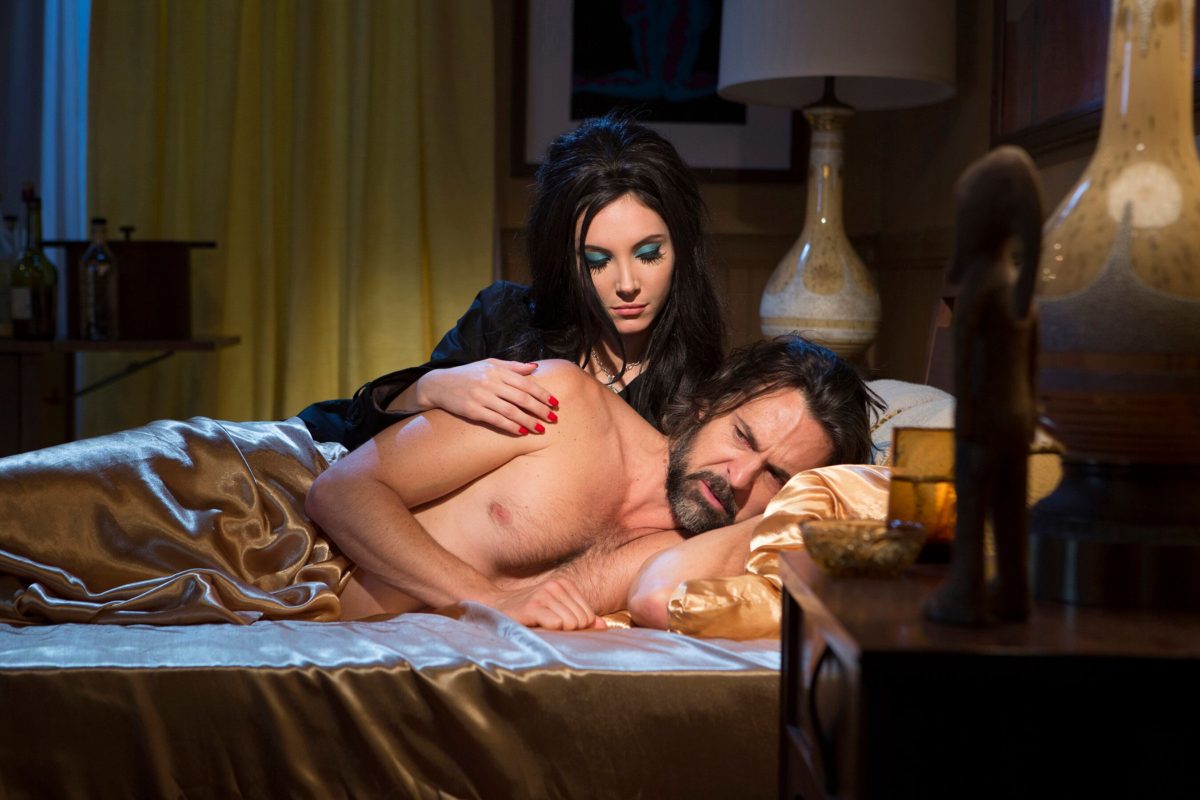
At one point, Elaine defines magic as a means of concentrating your will to get what you want. If we see The Love Witch itself as a work of magic, whose will is being enacted? What does Elaine want? What does Biller want? And how, for that matter, could we tell the difference between when to laugh and when to be afraid? That, to my mind, is one of the most haunting qualities of The Love Witch, and of Biller’s genius.
Find the complete October Horror Archive here:
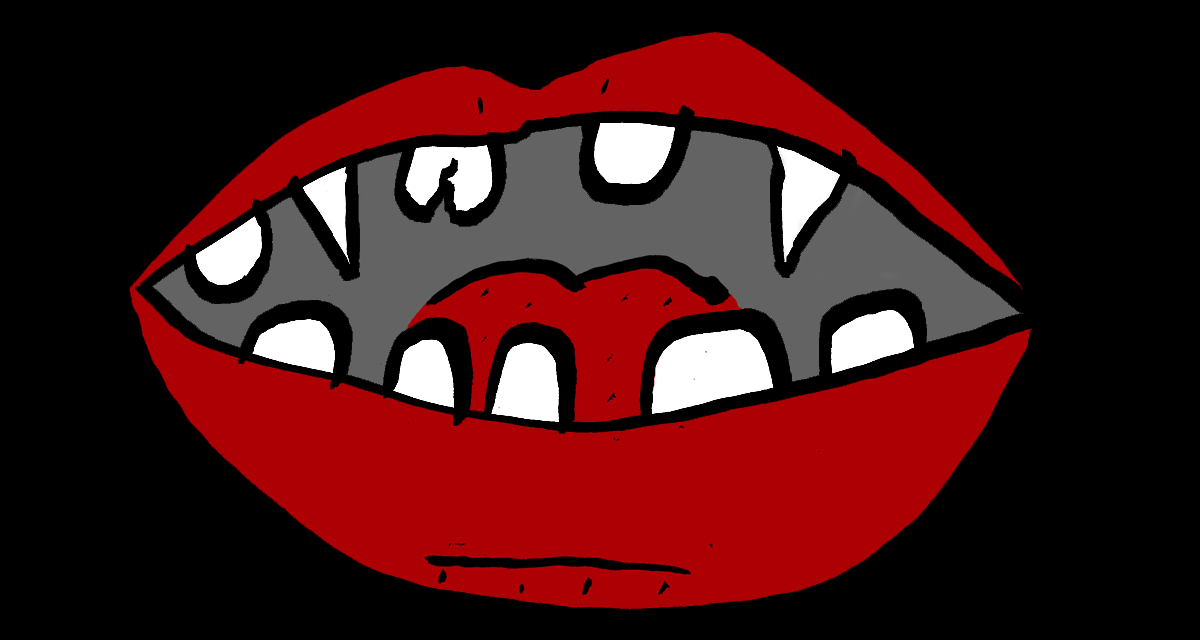
The Love Witch is available to stream here
Purchase The Love Witch on Blu-ray here
Follow our list of the 31 Days of October Horror on Letterboxd
(Split Tooth may earn a commission from purchases made through affiliate links on our site.)

